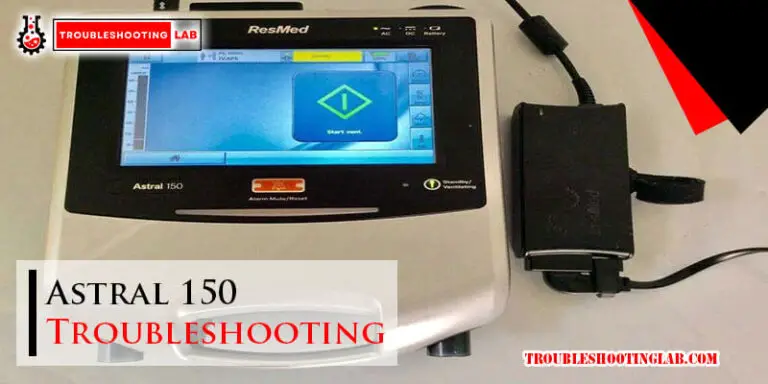Carrier Ac Troubleshooting Made Easy: Expert Tips and Tricks
If your Carrier AC is not cooling, check the thermostat settings and replace the air filter if needed. Additionally, inspect the outdoor unit for debris and ensure all vents are open and unobstructed.
Proper maintenance and troubleshooting can help resolve common AC issues and improve overall system performance. Regularly checking and cleaning the air filters, as well as scheduling professional inspections, can prevent potential problems with your Carrier AC unit. By addressing issues promptly and following recommended maintenance practices, you can ensure your AC runs efficiently and effectively to keep your space comfortable.
Trusting experienced HVAC technicians for complex repairs can also extend the lifespan of your Carrier AC system.

Common Ac Problems
When your air conditioning system isn’t working as it should, it can be frustrating and uncomfortable. It is important to identify and troubleshoot common AC problems to ensure your home stays cool and comfortable.
No Cooling
- Thermostat set incorrectly
- Faulty compressor may need repair
- Refrigerant levels might be low
Weak Airflow
- Dirty air filters need cleaning or replacement
- Ductwork issues may require inspection
- Faulty blower motor needs attention
Strange Noises
- Rattling or buzzing sounds could indicate loose parts
- Squealing noises may point to a worn-out belt
- Hissing or gurgling suggests refrigerant leaks
Contact a professional HVAC technician for proper diagnosis and repair of any AC issues to keep your home cool and comfortable.
Diy Troubleshooting Tips
When your Carrier AC is acting up, these simple DIY troubleshooting tips can help you get to the bottom of the issue quickly and possibly save you from a costly repair service call. Follow these steps to get your AC up and running efficiently again.
Check Air Filters
Clogged air filters can cause your AC to work harder than necessary, resulting in decreased efficiency and potentially damaging your system. Remove and inspect filters monthly, replacing them every 1-3 months as needed.
Inspect Thermostat Settings
Ensure your thermostat is set to cooling mode and the temperature is correctly set. Check for any programming errors or dead batteries that may be preventing your AC from functioning properly.
Clean Condenser Coils
Dirty condenser coils can obstruct airflow and reduce cooling efficiency. Regularly clean the coils by removing debris and gently hosing them down to maintain optimal AC performance.
Professional Troubleshooting Techniques
Professional troubleshooting techniques are essential for diagnosing and fixing issues with Carrier AC systems. By following specific steps, homeowners and technicians can identify problems and take the appropriate corrective actions. Let’s take a closer look at three professional troubleshooting techniques that can help you keep your Carrier AC running efficiently: refrigerant level check, electrical connections inspection, and evaporator and condenser coil examination.
Refrigerant Level Check
Check the refrigerant level of your Carrier AC system to ensure it is within the manufacturer’s recommended range. Low refrigerant levels can indicate a leak, while high levels can lead to inefficiency and decreased cooling performance. Use a manifold gauge set to measure the pressure of the refrigerant in the system. Compare the pressure readings to the manufacturer’s specifications to determine if the refrigerant level is adequate.
Electrical Connections Inspection
Inspect the electrical connections of your Carrier AC system to identify any loose, damaged, or corroded connections. Use a digital multimeter to measure the voltage and continuity of the electrical components, including the capacitor, contactor, and wires. Ensure all connections are tight and secure, and replace any damaged components as needed. Faulty electrical connections can lead to system malfunctions and should be addressed promptly to prevent further damage.
Evaporator And Condenser Coil Examination
Examine the evaporator and condenser coils of your Carrier AC system for dirt, debris, and blockages. Dirty coils can reduce the system’s cooling efficiency and increase energy consumption. Use a soft brush to gently remove any buildup on the coils, taking care not to damage the delicate fins. Additionally, consider scheduling regular professional maintenance to ensure thorough cleaning and inspection of the coils, maximizing the performance and lifespan of your Carrier AC system.
Preventive Maintenance
Preventive Maintenance
Proper maintenance is essential to keep your Carrier AC running smoothly and efficiently, ensuring optimal performance and extending its lifespan. By regularly performing preventive maintenance tasks, you can avoid costly repairs and increase the overall efficiency of your unit. In this section, we will discuss three important preventive maintenance tasks that you should prioritize in order to keep your Carrier AC in top condition.
Regular Filter Replacement
One of the simplest yet most effective ways to maintain your Carrier AC is by regularly replacing the air filters. When the filters become clogged with dust and debris, it restricts airflow, which can put strain on your unit and reduce its efficiency. Ideally, you should replace the filters every one to three months, depending on usage and the type of filter being used. This will help prevent dust and allergens from circulating in your home and ensure that your AC is operating at its best.
Annual Professional Inspection
Another crucial aspect of preventive maintenance for your Carrier AC is to have it inspected by a professional technician once a year. An annual inspection allows the technician to identify any potential issues or worn-out components that might lead to breakdowns or reduced performance. They can also perform tasks such as cleaning the coils, checking refrigerant levels, and testing electrical connections to ensure everything is in proper working order. By entrusting this job to a trained professional, you can have peace of mind knowing that your Carrier AC is in capable hands.
Ductwork Inspection and Cleaning
Properly maintained ductwork is vital for the efficient functioning of your Carrier AC. Over time, ducts can accumulate dirt, dust, and other contaminants, which not only hinder airflow but also reduce indoor air quality. Regular ductwork inspection and cleaning are necessary to remove any accumulated debris and ensure that air can flow freely throughout the system. A professional technician can assess the condition of your ductwork, clean it thoroughly, and identify any leaks or damages that may need to be repaired. Neglecting the cleanliness and integrity of your ductwork can lead to increased energy consumption and potential health hazards, so it’s important to include this task in your preventive maintenance routine.
Proper maintenance is essential to keep your Carrier AC running smoothly and efficiently, ensuring optimal performance and extending its lifespan. By regularly performing preventive maintenance tasks, you can avoid costly repairs and increase the overall efficiency of your unit. In this section, we will discuss three important preventive maintenance tasks that you should prioritize in order to keep your Carrier AC in top condition.
Regular Filter Replacement
One of the simplest yet most effective ways to maintain your Carrier AC is by regularly replacing the air filters. When the filters become clogged with dust and debris, it restricts airflow, which can put strain on your unit and reduce its efficiency. Ideally, you should replace the filters every one to three months, depending on usage and the type of filter being used. This will help prevent dust and allergens from circulating in your home and ensure that your AC is operating at its best.
Annual Professional Inspection
Another crucial aspect of preventive maintenance for your Carrier AC is to have it inspected by a professional technician once a year. An annual inspection allows the technician to identify any potential issues or worn-out components that might lead to breakdowns or reduced performance. They can also perform tasks such as cleaning the coils, checking refrigerant levels, and testing electrical connections to ensure everything is in proper working order. By entrusting this job to a trained professional, you can have peace of mind knowing that your Carrier AC is in capable hands.
Ductwork Inspection And Cleaning
Properly maintained ductwork is vital for the efficient functioning of your Carrier AC. Over time, ducts can accumulate dirt, dust, and other contaminants, which not only hinder airflow but also reduce indoor air quality. Regular ductwork inspection and cleaning are necessary to remove any accumulated debris and ensure that air can flow freely throughout the system. A professional technician can assess the condition of your ductwork, clean it thoroughly, and identify any leaks or damages that may need to be repaired. Neglecting the cleanliness and integrity of your ductwork can lead to increased energy consumption and potential health hazards, so it’s important to include this task in your preventive maintenance routine.
When To Call A Professional
While some AC troubleshooting tasks can be performed by homeowners, there are situations where it’s best to leave it to the professionals. Attempting to tackle complex electrical issues, dealing with recurring problems, or working with older AC units may require the expertise of a professional HVAC technician. It’s important to recognize these scenarios to avoid potential damage or further problems. Here are some instances when it’s wise to call in a professional.
Complex Electrical Issues
AC units have intricate electrical systems that can be challenging to navigate, especially for individuals without expert knowledge. If you notice issues such as frequent circuit breaker tripping, sparking or burnt wires, or unusual electrical sounds coming from your AC unit, it’s crucial to seek professional assistance. These complex electrical issues may indicate a serious problem that requires specialized expertise to diagnose and repair.
Recurring Problems
Dealing with recurring AC problems can be frustrating and time-consuming. If you find yourself repeatedly troubleshooting the same issues or temporary fixes do not seem to resolve the problem permanently, it’s better to let a professional handle the situation. Professionals have the experience and tools necessary to identify the root cause of the problem and provide a sustainable solution, saving you time, money, and unnecessary hassle.
Older Ac Units
As AC units age, they become more prone to performance issues and breakdowns. If you have an older AC unit that is consistently struggling to keep your home cool or experiencing frequent malfunctions, it may be time to call a professional. HVAC technicians have extensive knowledge of older models and can assess the overall condition of the unit, determine if repairs are feasible, or recommend a replacement if necessary. By consulting a professional, you can ensure that your older AC unit continues to operate efficiently and avoid potential long-term damage.
Frequently Asked Questions For Carrier Ac Troubleshooting
Can I Troubleshoot My Carrier Ac Unit On My Own?
Yes, you can troubleshoot your Carrier AC unit on your own by following some simple steps and guidelines.
How Can I Tell If My Carrier Ac Unit Needs Troubleshooting?
If your Carrier AC unit is not cooling or heating properly, making strange noises, or showing error codes, it may need troubleshooting.
What Are Common Issues That Can Be Resolved Through Troubleshooting?
Common Carrier AC issues that can be resolved through troubleshooting include faulty thermostat settings, dirty air filters, blocked vents, and low refrigerant levels.
What Steps Should I Take To Troubleshoot A Carrier Ac Unit?
To troubleshoot a Carrier AC unit, you should check the thermostat settings, clean or replace air filters, inspect the vents, ensure proper power supply, and check refrigerant levels.
When Should I Seek Professional Help For Carrier Ac Troubleshooting?
If you have followed the troubleshooting steps and your Carrier AC unit is still not working properly, it is recommended to seek professional help to avoid further damage.
Conclusion
Troubleshooting your Carrier AC can be a manageable task with the right knowledge. By following the steps outlined in this guide, you can identify and solve common issues with your AC unit. Remember to prioritize safety and consult a professional if needed.
With these tips, you can keep your home cool and comfortable.






